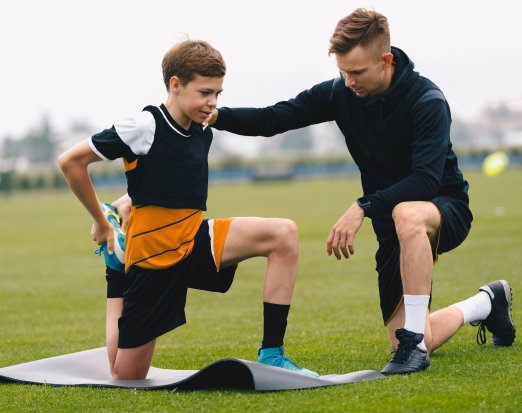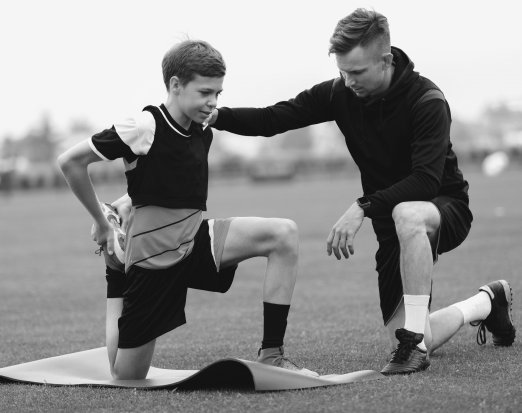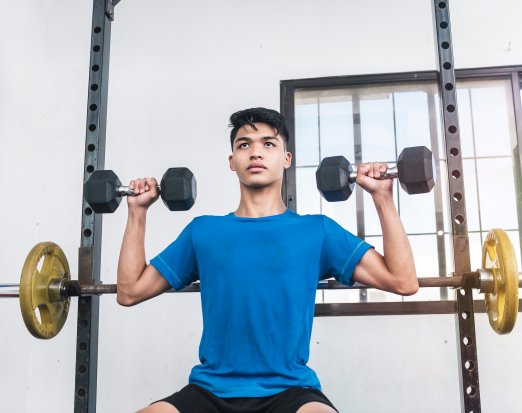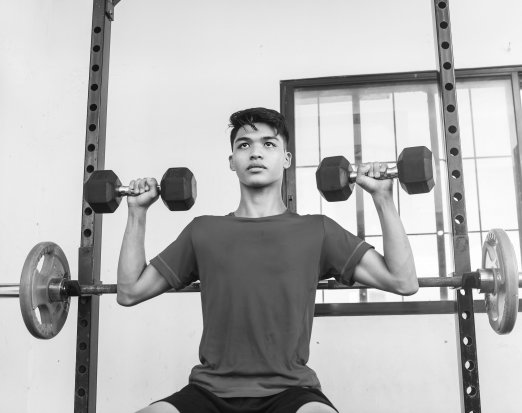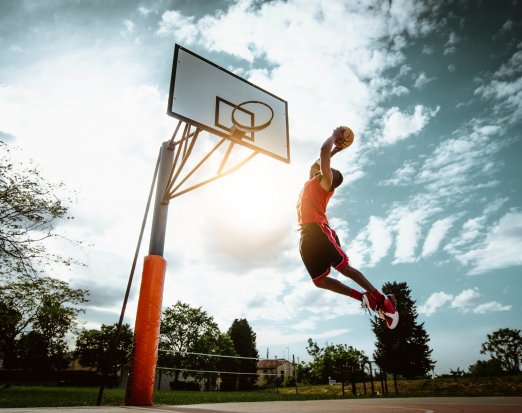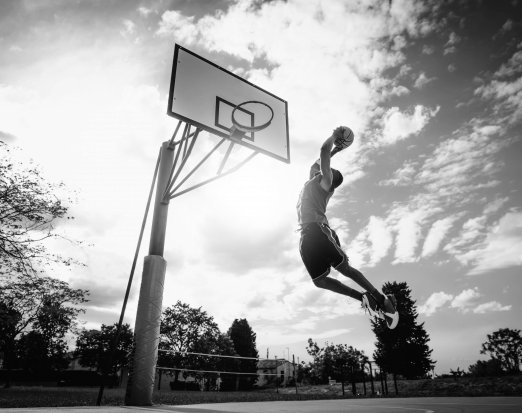A Guide to Starting a Youth Strength and Conditioning Programme
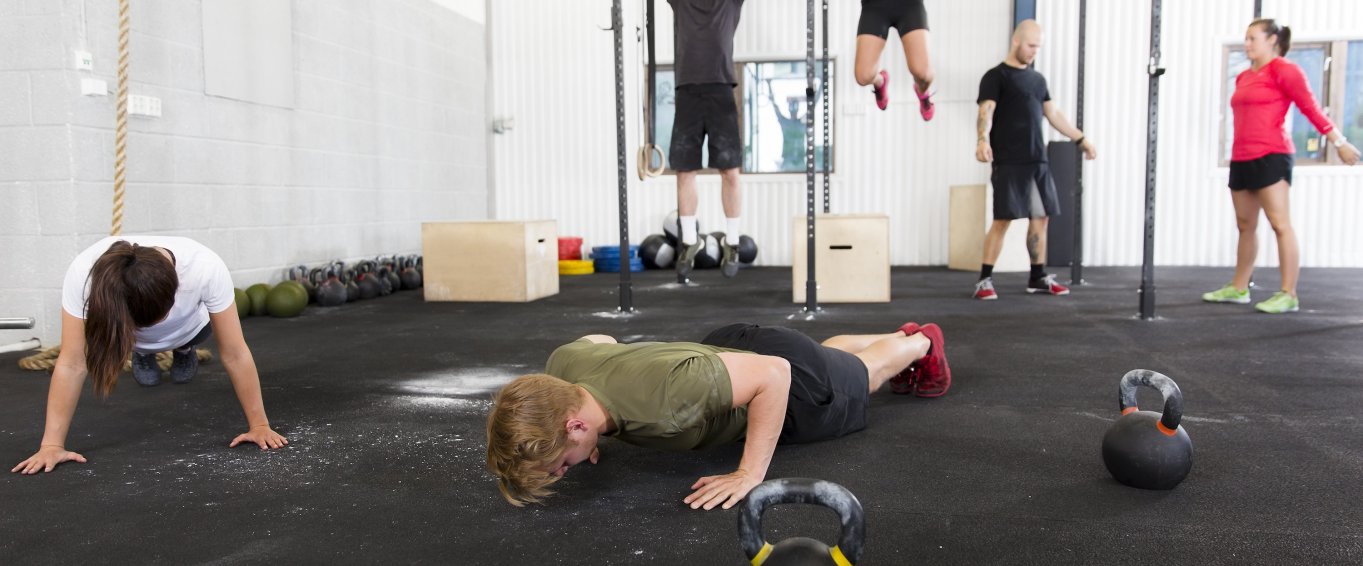
Strength and conditioning is essential for all athletes regardless of age, sport, ability, and fitness level. Moreover, strength and conditioning differs from general exercise, as strength and conditioning aims to target a specific athletic quality or qualities. These athlete qualities include, strength, especially relative strength, acceleration, change of direction – agility, power, and repeat sprint ability. By training these athletic qualities, the athletes can start to learn important lessons and skills, for example, testing – bench marking – setting training targets, gym safety and how to use different gym equipment, communication and leadership – all to empower the athletes to take responsibility for their sport readiness, long-term adherence leading to high performance.
The school setting is ideally positioned to introduce and lead strength and conditioning sessions to all athletes – individuals wanting to improve their athletic qualities for their sport or individuals wanting to improve their athletic qualities to try a new sport. Strength and conditioning is frequently delivered as blocks of training (6 – 8 weeks), with each block centred around an aim or focus – strength training (general preparation), plyometrics (reactive strength qualities), power (improvements in rate of force development), sprinting (task specific training and skill development). This block type of training falls nicely into the school’s yearly terms – with each half-term or term focusing on a particular athletic quality. Furthermore, with the aid of technology, the athletes can track and monitor their physical development, which will help with confidence, sport readiness, and minimising the risk of injures – especially lower limb injuries.
To help PE teachers and sport coaches, we have created a full curriculum (links with traditional PE and the National Curriculum) that helps to introduce and embed strength and conditioning into the school setting. The curriculum breaks down the different blocks of training and presents ideas on how that training (athletic qualities) can be delivered – each block/term has individual session plans – warm ups, strength sessions, plyometric, sprint, and agility. To further engage with the athletes (pupils), we have created an Athlete App – the Athlete App allows the athletes to easily follow their training, plus, upload training data – RPE levels, training loads and, sprints completed. This training information can be easily viewed by the teacher/coach, helping the teacher/coach to support and guide each athlete in their long-term development (also shared with parents as athlete reports).
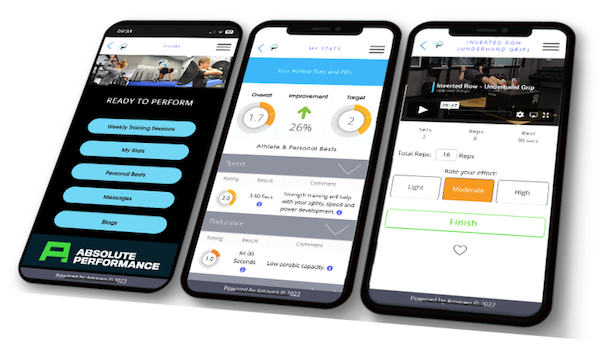
Strength and conditioning generally has four aims, especially for youth athletes. Athlete preparation is split into two areas, the first part focuses on general training, general adaptation, allowing the athlete to learn and adapt to the training – introduction to a range of training modes. The second part moves towards sport readiness. Sport readiness can come later as the athlete develops, as Sport Readiness assesses the individual demands of the sport – strength and conditioning therefore prepares the athletes generally and then more specifically so that they can manage and perform at their sport. Aim three is to reduce the risk of injury. We know that regular strength training and improvements in relative strength significantly reduces the risk of injures – especially lower limb (hips, knees, and ankle). And finally, aim four is to improve sports performance – by preparing the athletes well both generally and more specifically as they develop in their training, this will minimise injuries. Being better prepared for the sporting demands, and with consistent sporting practice, will lead to high sport performances.
The Impact of Strength and Conditioning
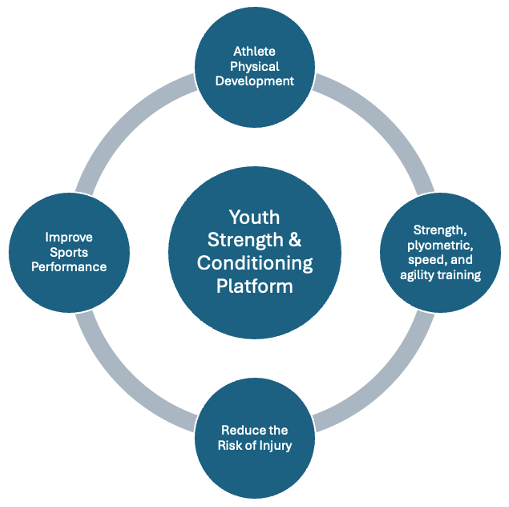
Athlete Preparation (General & Sport Readiness)
Sport has clear benefits including specific fitness and skill improvements, communication and leadership, social inclusion, and personal development. However, we also need to appreciate that each sport has a demand that the athlete needs to cope with. Unfortunately, athlete physical preparation is often overlooked, with focus on sport practice (technical skills) and sport competition. Clearly, sport practice and technical skills are important, but we also need to develop specific athletic qualities. Arguably, the most important athletic quality is strength. It seems that strength is the catalyst for all other athletic qualities and plays a vital role in reducing injuries.
Firstly, greater strength is a training outcome, with many neurological mechanisms that contribute to a new level of strength. Exposing youth athletes to regular strength training will drive a cascade of important adaptations, including –
- Greater central nervous system drive
- Recruitment of higher threshold motor units
- Changes or alterations of muscle recruitment
- Pre-activation strategies of muscles
- Changes in sensory feedback
- Changes in co-activation strategies
The above list is no way exhausted, but this stresses the importance of introducing athletes to a range of strength training. Furthermore, the athletes will be able to produce or generate higher levels of strength (force) in training and competition. Some of the neurological adaptations will also help reduce the risk of injuries, as the athletes will be able to manage high forces (acceleration, deceleration, jumping and landing).
Reducing the Risk of Injuries
A clear aim of a strength and conditioning programme is to reduce the risk of injury. Unfortunately, youth injury rates are increasing with many being classified as overuse injuries or sport related. Potentially, a large component of reducing injuries is through athlete preparation. Furthermore, as many youth athletes participate in more than one-sport, monitoring their sport competition volume will help in overtraining and burnout.
Injuries will always be viewed as multifactorial, with many factors being associated – life stress, fatigue, nutrition level, sleep quality, strength levels, training age, level of sport played. However, what is clear, is that athlete preparation is a key factor. By supporting athletes to cope with the sporting demands, for example, sprinting, jumping, and agility - studies have shown that this can significantly reduce injuries.
Stronger Athletes Perform Better in Sprints, Jump Ability and Agility Performances
Strength and conditioning is training athletic qualities that are associated with high performance. From analysing sports, we know that athletes perform many of the performance characteristics, including, short-sprints (under 20 metres), a range of jumps, cuts – a quick change of direction, repeated sprints, and high-speed running. Studies have shown that athletes with higher relative or maximum strength levels have improved acceleration times, higher jump ability, and quicker agility times. Therefore, by improving the athlete’s relative strength levels, and through quality sport practice, the athletes can develop new motor performances – a change in motor strategies with their new strength levels. This will give each athlete this best opportunity to compete within their given sport.
Starting Right - Youth Strength and Conditioning Curriculum
A high-quality youth strength and conditioning curriculum aids in the development of every athlete to prepare, progress and perform. Throughout the phases of athlete development, the curriculum will provide opportunity for every athlete to learn different modes of training, develop specific physical capacities, monitor their wellbeing, whilst offering support and guidance which will improve their overall confidence. Developing athletes to be well-prepared for their sport and to lead healthy, active lives will give every athlete the opportunity to grow and succeed.
Starting a strength and conditioning programme is the key to success. All athletes should be encouraged into the programme as early as possible to develop their skills and strength levels. Strength is just like other skills, it takes time to build and to develop, so the earlier athletes engage into a programme the more time they have in improving their athletic qualities. To help PE teachers and sport coaches in starting a strength and conditioning programme, we recommended that they use a three phased approach to training. Using a phased approach to training, again, is ideal for the school setting. The athletes can train relative to their year group, with clear aims and objectives (per term). As the athletes develop through the different phases, the athletes can be given more autonomy to develop specific physical qualities.
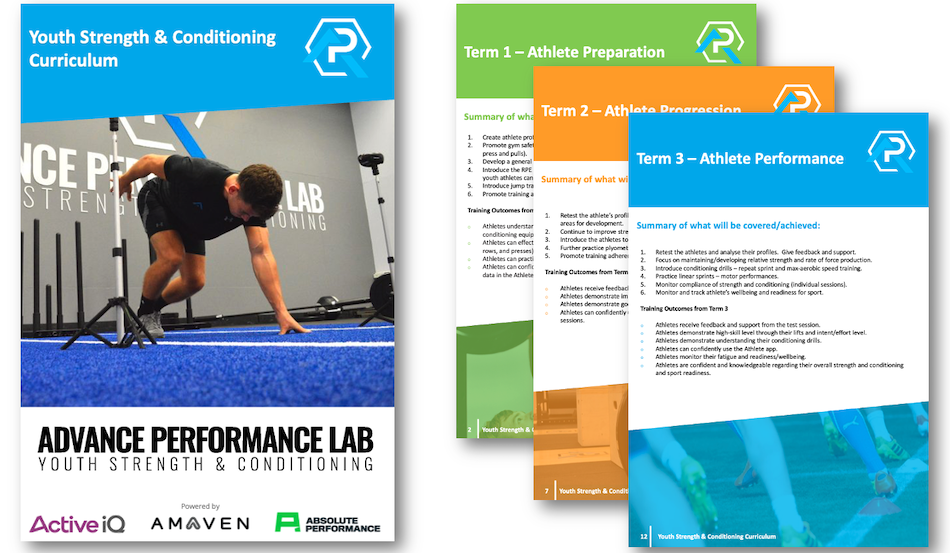
Phase 1 – Athlete Preparation
Phase 1 is an introduction to strength and conditioning, with a key focus on learning the different exercise setups, including, back and front squats, lunges, deadlifts, press, and rows exercises. The learning and practice of the setups emphasises gym safety and good gym practice. As the youth athletes are new to strength and conditioning, alongside their strength training, they are also exposed to plyometric drills and sprint training. Overall, the general aim in this phase is ‘athlete preparation’ - to develop confidence, increase a base of strength and to develop a host of motor skills.
Phase 2 – Athlete Progression
Phase 2 is continuation from Phase 1. From Phase 1, the athletes will have gained confidence and experience in lifting, and developing their strength, preferably their relative strength (this will be monitored in the athlete’s profile). Furthermore, the athletes will continue to practice and develop physical qualities from plyometric drills, sprint and agility training. The main aim from this phase is ‘athlete progression’ - to further develop physical qualities from phase 1, including relative strength, reactive strength, rate of force development, power, and motor performance in sprint and agility.
Phase 3 – Athlete Performance
In Phase 3, the athletes should be more autonomous with their training to help with their own sport preparation and performance. From consistent athlete monitoring and tracking the athletes will be aware of physical areas to develop or maintain. The main aim in this phase is ‘athlete performance’ – sport preparation, freshness, and fitness qualities for sport/position performance.
Youth Strength & Conditioning Platform for Schools, Sport Clubs, and Academies.
Our platform helps to deliver effective training and tracks athletic progress and development, with the core objectives of reducing the risk of injuries and to promote both sport readiness and performance. The platform’s features include
- Strength and conditioning tests and dashboard to monitor and compare athlete metrics
- Athlete app - athletes can discover new exercises and train independently
- Track data - monitor athlete’s training loads, RPE, and training adherence
- Reports - simply create squad, team, and individual athlete reports
- Full curriculum - follow a strength and conditioning curriculum with a library of session plans
